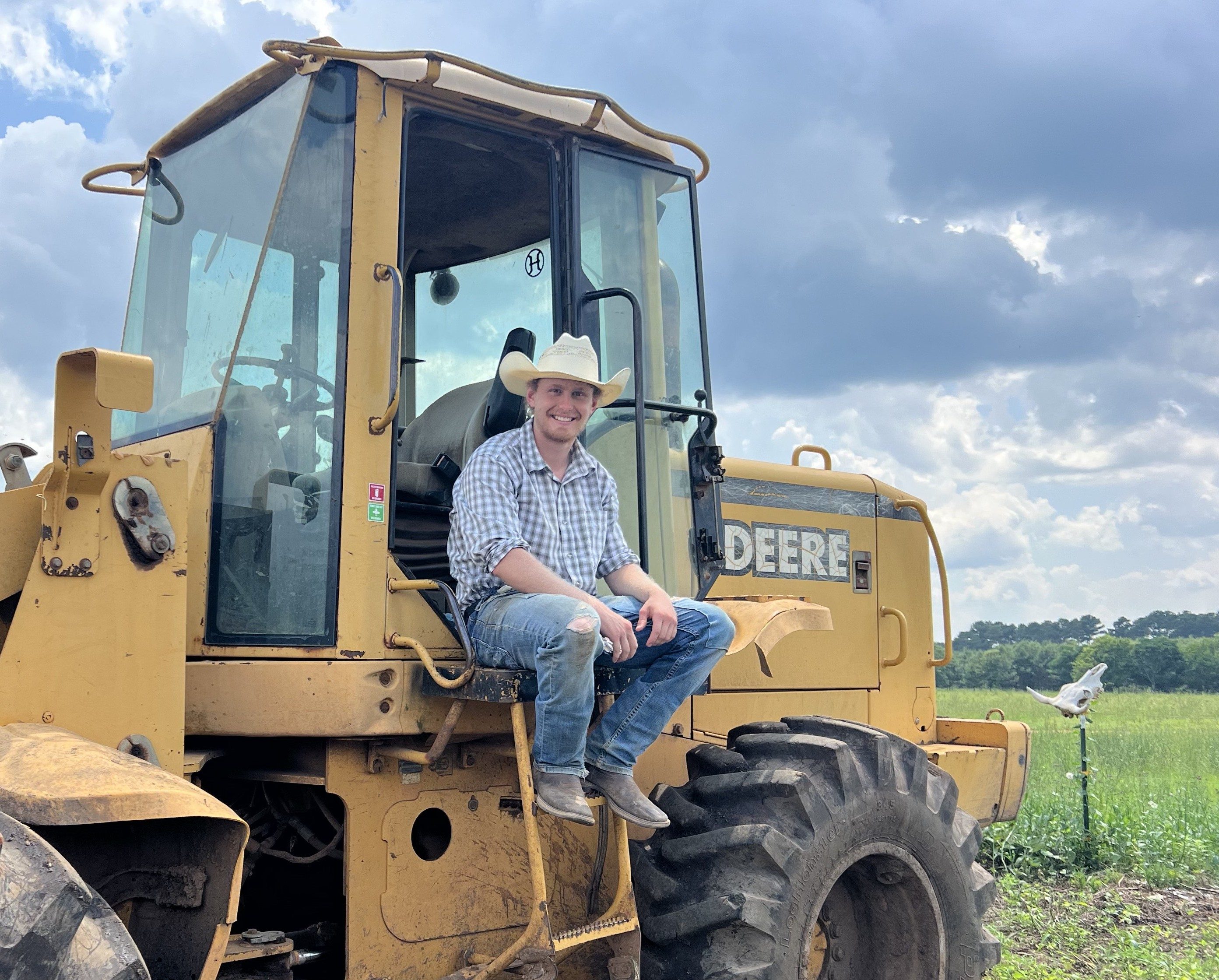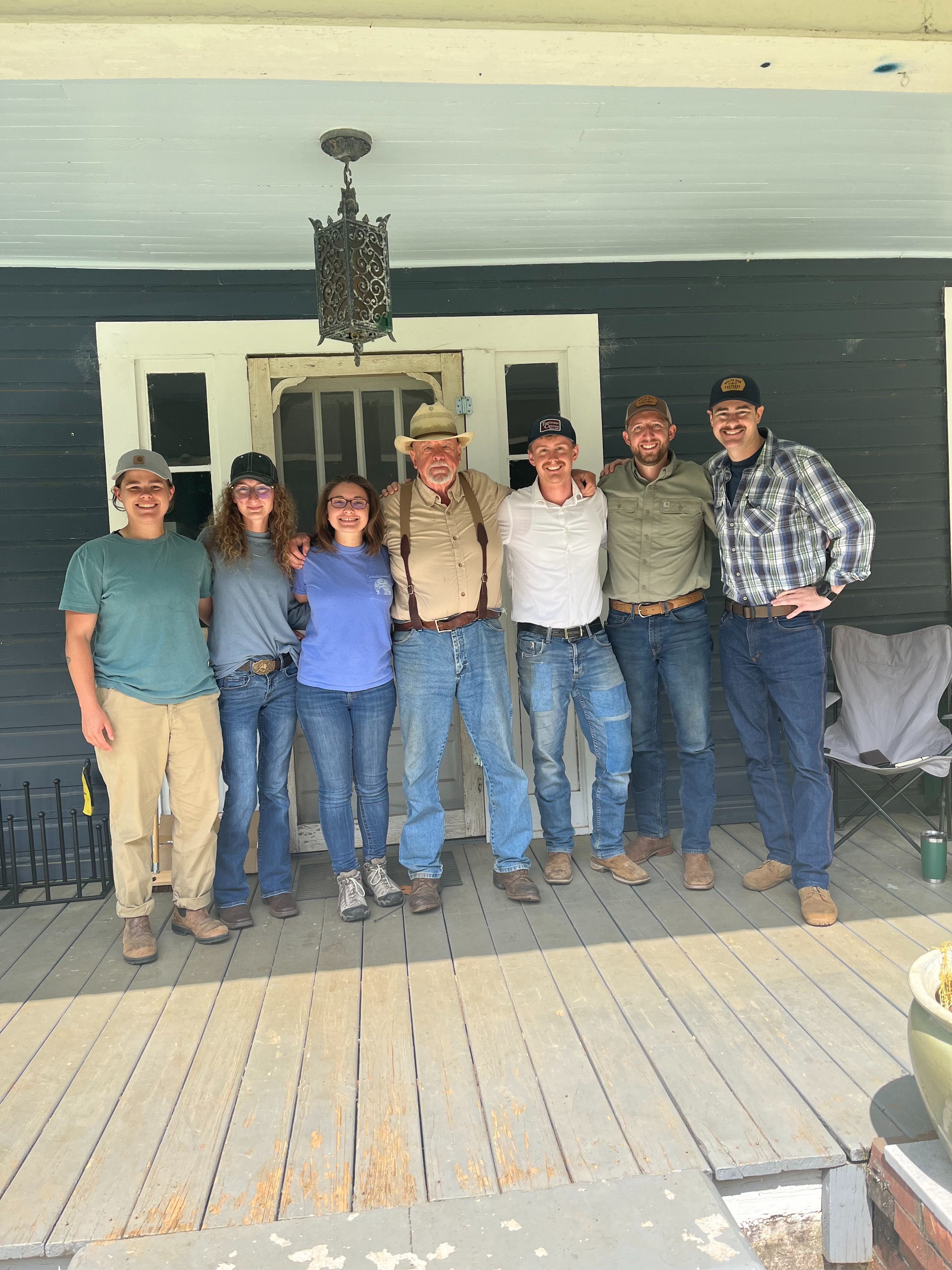TheFarmersDigest
The Farmers Digest
May 26, 2025

Author
Chris Pigge

Editor
Miles Falk
Freedom for Farmers: Direct to Consumer Sales
About the Author
Hello readers, my name is Chris Pigge. I’m entering my senior year at the University of Missouri, where I’m majoring in agriculture and minoring in economics. I plan to return to the family farm once I graduate and run a direct-to-consumer business. I am extremely passionate about direct-to-consumer marketing as an alternative to the traditional farm-to-middleman-to-consumer approach, especially for small and medium-sized farms.
My opinions have been shaped by my hands-on experience interning for a summer at White Oak Pastures, my self-directed learning and extensive reading of works by leading farmers in the direct-to-consumer space—including Joel Salatin, Will Harris, Gabe Brown, Walt Davis, and many others—as well as by my formal education in Mizzou’s Agriculture program.
I do not claim to know everything and I am sure there are gaps in my knowledge, but like you, I am trying to learn more and share what I already know with others. I also worked for White Oak Pastures (Will Harris) for a summer getting actual hands-on experience with a direct-to-consumer farm and regenerative practices. So without delay, let's dive in.

(Will Harris in the center, Chris Pigge to the immediate right of Mr. Harris)
Written by Chris Pigge
Direct-to-consumer marketing is a business strategy in which farmers seek to sell their goods directly to individual consumers instead of a meat packing plant or middleman. Direct-to-consumer marketing can be a Goliath of a task to undertake and many farmers shy away from it for this reason. However, it is my belief that the benefits far exceed the costs if you can make it work.
The biggest pull for someone to start selling direct is the freedom it can bring, in my opinion. Whether you're selling grain-finished beef, grass-fed beef, lamb, pork, vegetables, or some other good, when you sell direct you become a price maker. This is in stark contrast with conventional marketing routes where you have only a few buyers and therefore cannot really control the price.
Becoming a price maker is what makes direct-to-consumer so appealing. I know farmers who sell grass-fed beef for $8.99 hanging. If the average grass-fed hanging weight is 550 lbs, that's almost $5,000 gross. Let's say $1,000 in expenses (butcher, vet bills, minerals, etc.), you're still coming out with $4,000 a head net.
Even if you're not producing something as unique as grass-fed beef, you can still make more selling direct. Right now through conventional channels, a beef is going for $2.30 per lb live weight, which comes out at about $3,220 gross. This isn't bad, but imagine if you sold a quarter of a beef to four families for $3.50 per lb live. You would be pushing $5,000 gross—a substantial increase in profit.
I know what you��’re thinking: this is just one example, and it might not work in your context because of X, Y, or Z. My question to you is, have you tried? Many farmers I have talked to express interest in direct sales but don't know where to start, and it's understandable. So let's break down how you could dip your toes into direct-to-consumer marketing as a newbie.
Getting Started
This is often the most challenging step, and for several reasons. For starters, you need to find a processor who can work with your schedule. As many of you know, this is a big bottleneck in our community—there are a lot of farmers and not enough processors. Without a processor who can meet your specific needs and is state or federally inspected, you're stranded up creek without a paddle. Another consideration that I won't go in depth on is making sure you have the infrastructure to store and move meat from the processor to your farm and to other locations.
The next step is ensuring that you don't break any laws. Each state has different licenses and requirements that people need to meet if they want to sell meat. So read up on your local laws and make sure the government doesn't have a reason to come knocking.
Alright, so you have figured out the logistical stuff. Now it's time for the hard part—you gotta find people to buy your stuff. This is where I think a lot of farmers struggle. It's not because they aren't smart or informed or good farmers; it's because this is a completely new skill set that is challenging. This is the key to direct sales, and it's often overlooked: you have to be a great salesman, people person, and good at building and maintaining relationships.
If you have been farming most of your life and selling to the same 2 or 3 meat packers, this is pretty daunting, BUT not impossible. Now that you know the basic things you need to do direct sales, let's talk about how to build the skills to sell.
Building a Brand
The good news for you farmers wanting to start direct sales is that people are hungry to know where their food comes from and know their farmer. COVID made a lot of people realize that knowing a farmer is not a bad idea. When the grocery shelves go empty, they want someone to call. Furthermore, many consumers want to support local food for economic reasons. They are okay with paying a little bit more because they know it's going to a local family farm and stimulating the local economy.
Building off this framework, you have to put yourself out there. Whether that's social media (Facebook, Instagram, etc.), a farmers market, or a local event where your farm is present. Seek these things out and TALK TO PEOPLE. I have been to many farmers markets where a farmer sits in the corner with their arms folded scowling—their booth usually has very few visitors (I wonder why?). If you want to sell direct, then you need to be a good communicator; it also helps to be likeable. I am not advocating for being inauthentic or fake; I am advocating for building up skills that allow you to reflect the truest version of yourself to others.
So how do you get customers to like you? It's not by telling funny jokes, or cool stories, or anything you can really say, although being a good conversationalist helps. The key is active listening.

Active Listening: The Key to Selling
Most people want to be heard and don't want to listen. In fact, there is a statistic that says when most people are listening to someone else, they are thinking about what they will say next. This is not bad; this is just human nature. I do it, your wife or husband probably does it—it's just common behavior. However, now that you know this, you can start practicing your active listening skills. When someone is talking to you, really make an effort to understand them, empathize with them. Ask calculated questions to keep them talking. Instead of thinking what you will say next, think about if you were in their shoes.
I know this may sound like it won't work, but if you really strive to understand someone—and I mean genuinely practice active listening—you will be amazed at the results. People will flock to you because they respect you and feel you understand them. Now you may be thinking, what the heck does this have to do with selling my beef, lamb, or xyz? The answer? Everything. Relationship building is the key to direct sales—you have to build a network of people who trust you and your food.
The foundation of active listening is understanding others. Here are some techniques to help you achieve this. The first technique is called mirroring. When you are listening to someone and they are talking about a problem or a situation, when they finish their sentence, follow up with the last word or phrase they said. When you do this, phrase it like a question. When someone hears this, they divulge more information and feel like you are listening to them. Here is an example:
Customer: "The ground beef at the supermarket is just no good."
Farmer (i.e., you): "No good?"
Customer: "Yes, it's just so greasy and cooks down so much."
Farmer: "Really? Well, why don't you try some of my ground beef? It doesn't cook down too much."
See, the whole idea is to understand where the customer is coming from and why they feel that way. You can then use this information to build a relationship as well as go for the sale. One key note though: don't lie. Never promise something you can't deliver or make a claim you know isn't true. This is the fastest way to run your direct-to-consumer business off a cliff. People appreciate honesty and forwardness, and if you ever do bend the truth, someone someday will find out and you will get burned.
Another technique you can use to help you communicate is summing up the customer's feelings with an "it seems" statement. I have used this technique when giving estimates for tree removal many times, and it works very well. This technique lets the consumer know you understand their situation and what they are thinking.
Example from My Tree Cutting Days:
Customer: "So the ash tree is the most important thing, but I would also love to do x, y, and z. The only thing is my budget is x amount."
Salesperson (me in this case): "It seems like you have a lot of work here, but the priority is the ash tree hanging over your house?"
Notice how I phrased this as a question, not a statement. You want the customer to then confirm. This puts them at ease and makes them feel like you really get them.
Conclusion
The thing I want to leave you with today is this: Direct marketing is viable for many small and medium-sized farms. On the farm side, it requires whole farm planning and an analysis of your local laws and unique situation. On the selling side, it's all about relationships. You have to physically get out in your local community and talk to people and be liked if you want to be successful. Having an online presence as well can really help. You can do this if you try, but before embarking on this path, look yourself in the mirror and ask if you are capable of this.
I guarantee you it will be challenging, but the benefits of becoming a price maker are tremendous. You determine how much you and your family's hard work is worth—not some middleman. You get to see and have a relationship with the people who eat your food. This can lead to new friendships and bring the community closer together. The last thing I will say is read, read, read. There are several books that can help you understand how to better communicate, lead, and do direct-to-consumer sales. Below are a few of my favorites.
You determine how much you and your family's hard work is worth—not some middleman.